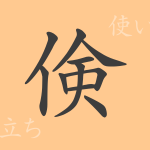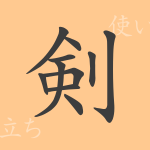Japanese has a multitude of kanji characters, each with its own unique history and meaning. Each of these common kanji characters holds a deep story and is intricately connected to our daily lives. In this article, we will shine a spotlight on one such kanji, “兼” (けん, ken). We will explore its origins, meanings, usages, and even delve into idioms and proverbs that feature this character. Join us as we uncover the profound depth of the Japanese language.
Origin of 兼
The kanji “兼” (けん, ken) originates from ancient China, where its form depicted the bundling of two stalks of wheat. This image conveys the concept of combining two things, symbolizing the idea of “兼ねる” (かねる, kaneru) – to do multiple things simultaneously. Over time, this kanji has been used in various cultures and languages, playing a significant role in Japanese as well.
Meaning and Usage of 兼
The kanji “兼” (けん, ken) signifies the act of handling multiple tasks or roles at the same time. Specifically, it appears in words like “兼業” (けんぎょう, kengyō) meaning holding multiple jobs, and “兼任” (けんにん, kennin) meaning holding multiple positions. Additionally, it is used metaphorically to indicate complexity or multifaceted aspects of things, making it a versatile character in the Japanese language.
Readings, Stroke Count, and Radical of 兼
Let’s break down the kanji “兼” (けん, ken).
- Readings: On’yomi – ケン (けん, ken); Kun’yomi – かねる (kaneru)
- Stroke count: The character “兼” consists of 10 strokes.
- Radical: The radical is “八” (はち, hachi), also known as “はちがしら” (hachigashira), which resembles a sideways figure eight.
Idioms, Proverbs, and Phrases Using 兼
There are numerous idioms, proverbs, and phrases that include “兼” (けん, ken). For example, “兼業農家” (けんぎょうのうか, kengyō nōka) refers to farmers who also have another job, and “兼務” (けんむ, kennmu) means holding multiple duties. A proverb, “兼ねて願うことなかれ” (かねてねがうことなかれ, kanete negau koto nakare), teaches that one should not make two wishes at the same time. These expressions highlight the richness of the Japanese language and the cultural depth embedded in each kanji.
Conclusion About 兼
Through this article, we have explored the origins, meanings, usages, and roles of the kanji “兼” (けん, ken) in the Japanese language. This character illustrates how we often balance multiple roles in our lives. Understanding a word means understanding the culture and values it represents. By delving deep into a single kanji, we can enrich our appreciation of the Japanese language’s expressive power and the culture that supports it.

























